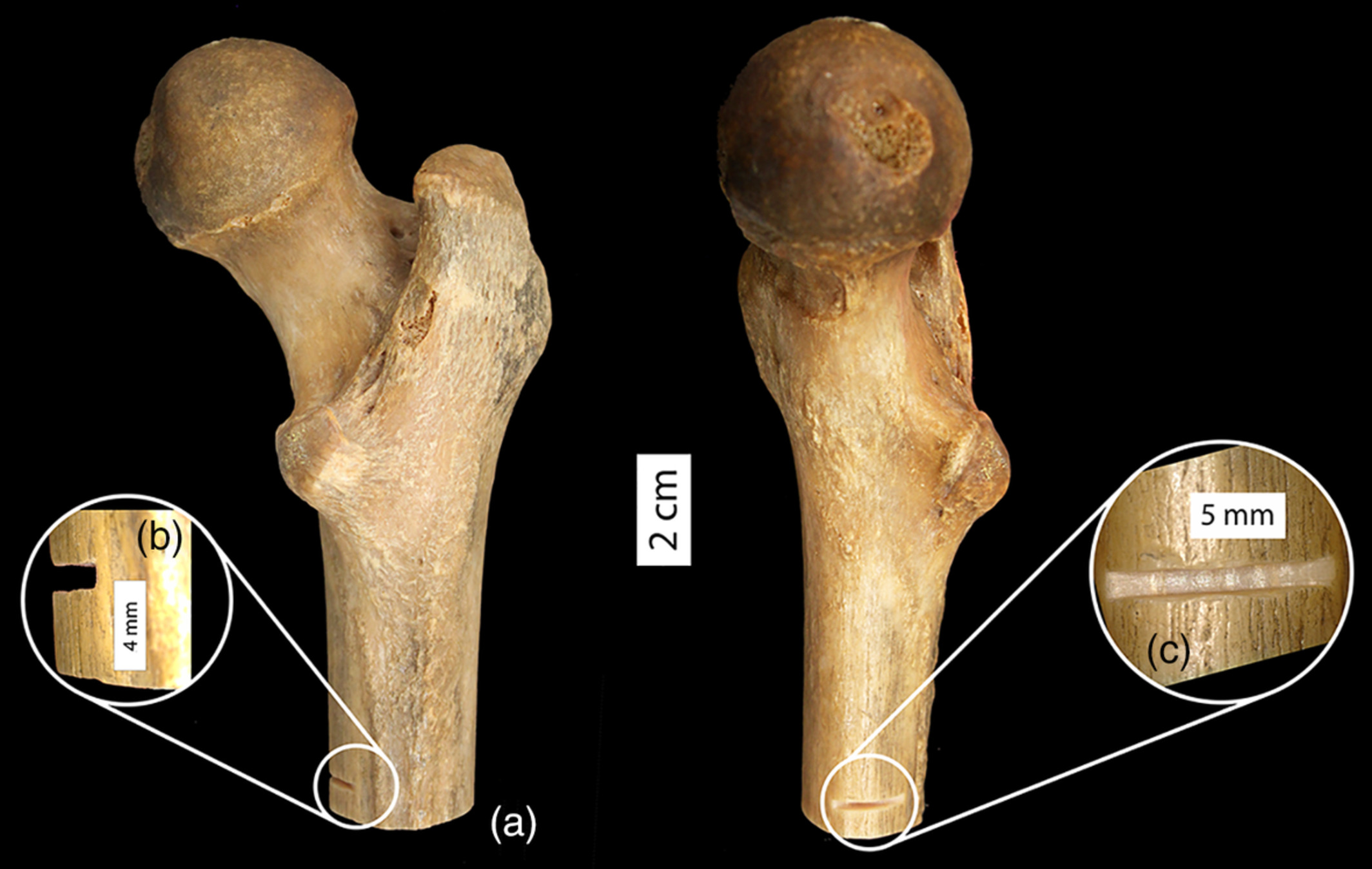Human skeleton system undergoes numerous modifications in person’s lifetime, these changes are 'Antemortem modifications'. The modifications also occur after death, from various agents, like physical, chemical, biological, etc. These changes are called postmortem modifications. Postmortem modifications can dramatically damage the bones and even the whole skeletal remain, altering its composition. The various agents can be classified broadly into two major categories: Physical agents & Biological agents.
1. Physical agents
1.1 Geographical location & elements
Bones can experience fractures, scratches and get broken from fall onto a rocky surface. The continuous movement from earth can also cause scratches and fractures. Substantial damage is caused to bones in colder climates, due to continuous cycle of freezing and thawing. Major crisis is caused due to these alterations to bone, as they can be mistaken for human-induced, these modifications include striations, polishing etc.
Abrasion of bones can also be caused by gritty or sandy particles present in air or water, these modifications can be seen in remains found in desert or deep in river or water bodies. Weathering in bones is first seen as surface cracks which run parallelly. The cracks eventually deepen and deteriorates the complete bone. The exposure of bones to sun can also lead to calcination, and ultimately loss of organic and inorganic composition of bone. The bones which have been exposed to prolonged sun, show the signs of bleached or white appearance.
1.2 Fire
Bones exposed to extreme high temperature or fire show the signs of twisting in surface configuration, i.e. the bone contour and fracture with an irregular pattern and a U-shaped fracture, when the flesh is still intact with the bone. The same cannot be witnessed in burnt bones without flesh. These bones, which are completely deflated and been dried out are termed as dry bones. The burning of dry bones shows signs of fracture with vertical lines, dehydration, decomposition (loss of organic component of bone), inversion (change in inorganic component of bone), and fusion (melting of bone mineral). Dehydration and decomposition increase the porosity of bone, which in cause fractures and more breakage. The fusion and inversion from burning of bone cause it to shrink and decrease in porosity. In contrast to dry bones, the bones with intact flesh shows high degree of variation when subjected to burning. The charring of bone tissue may all seem similar to normal bone which have been subjected to various weathering processes. So, it’s important to distinguish the two, and this can be done through various microscopic and chemical analysis.
1.3 Chemicals
Bones are subjected to structural and chemical breakdown, mainly collagen and minerals, as part of postmortem modifications. The chemicals present in environment, in soil and microbes can increase the deterioration of bones dramatically. Even the suitable conditions can gradually lead to fossilization of bones, in thousands or million years. For example, soil with high water table or acidic pH deteriorates the bones to greater extent, however soil with alkaline or neutral pH and drained soil preserves the bone from chemical breakdown. Different depositional environments, like deserts or marine areas, shows different effect on bones. Some shows high degree of destruction, while dry and cold desert like areas preserve bone and in some cases flesh as well.
2. Biological agents
2.1 Animals
Carnivores feed on the dead bodies mainly for easy retrieval of soft tissue and marrow within the bone, and leave characteristics gnaw marks behind. The animal, like hyenas, wolves and insects have major impact on bones. Gnawing of the bones for food by these animal’s cause breakage the bones, splintering, pitting and puncturing. Carnivorous damage is mainly seen in spongy trabecular bone. Animals like small rodents can also cause significant damage to bone by gnawing, and these marks can often be confused as human-made. Small rodents often target bone orbit and bone ridges, the repeated impact from rodent teeth shaves the bone surface, causing shallow and irregular flat grooves. However, even patterned and regular traces are also observed, hence the confusion with man-made modifications.
2.2 Plants
Plant roots penetrate deep into earth for retrieval of water and nutrients. Bones buried under earth are subjected to modifications by plants. Plant roots can penetrate the bone causing fragmentation, and shallow grooves in a reticular manner. The whole surface of bone can also deteriorate if plant roots are dense enough. Decalcification and whitening of bone are also caused by acids produced from plant roots. The roots growing within the medullary cavity of bone shaft can also push the bone away.
2.3 Humans
In case of foul play, skeletal remains may show signs of man-made modifications such as cut or chop marks, and scrape marks. Cut marks are observed when bones are subjected to slicing and cutting by blade, and appears as narrow and fine parallel or sub-parallel marks or striations. A forceful contact with blade of the tool on the bone cause the chop marks, it’s similar to the cut marks. When the edge of tool is scraped across the bone, it causes shallow marks but on much wider area of bone, these are called scrape marks. Percussion marks are seen when bones are impacted with hammerstone or similar tool, it causes irregular and rough marks. These marks cause percussion pits if all soft tissues have gets withdrawn from bone. Percussion on medullary cavity of bone shaft cause inner conchoidal scars, and even crushing and peeling of bone, if bones is spongy and immature respectively. Bullets and sharpness also cause fracture of bones, during entry and/or exit. Cannibalism can cause additional modification on the bones, percussion marks and pits are often seen in these cases, as a cannibal may try to pulverize the tissue with hammerstone to extract fat. Cut marks, marks of other tools, burning of bone may also be there in case associated with cannibalism.

